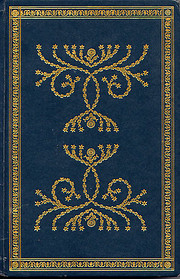

Pulse en una miniatura para ir a Google Books.
|
Cargando... The Quaker Bonnet: A Child Story (edición 1915)por K. K. K.
Información de la obraThe Quaker Bonnet: A Child Story por K K K
Ninguno Actualmente no hay Conversaciones sobre este libro. sin reseñas | añadir una reseña
No se han encontrado descripciones de biblioteca. |
Debates activosNingunoCubiertas popularesNinguno
 Google Books — Cargando... Google Books — Cargando...GénerosValoraciónPromedio: (3) (3)
¿Eres tú?Conviértete en un Autor de LibraryThing. |
|||||||||||||||||||||||||||||||||||||||||||||||||||||||||||||||||||||||||||||||||||||||||||||||||||||||||||||||||||||
Edna learns that the Quaker bonnet, in the eyes of London society, identifies her great aunt with all the good works and good reputation of generations of Quakers. Even Queen Victoria from her carriage gives a nod in recognition as she passes the gray-clad woman walking in the park with her great niece. As she learns to respect and admire the bonnet, and what it represents, her child's forthrightness and penetrating questions cause Aunt Deborah to question if her own behavior is worthy of the reputation she wears on her head.
The writer, who claims her authorship only with the mysterious initials K. K. K., tells the story as something that happened in that time "thirty years ago" when things were not so modern. There is no publication date, but the single illustration opposite the title page bears the date 1914, suggesting the setting is London of about 1885. Since the time period would likely have been within the living memory of the author, descriptions of dress, manners, and the London landscape offer a first-hand view of the period. Edna's favorite place in the city is a high-end toy shop, and there are child-enticing descriptions of expensive toys of the era. Notable is the aunt's position in society as a Quaker woman of means. Aunt Deborah educates Edna about the wealthy Quaker version of simplicity: a few very expensive gray silk gowns that are expected to prove their sensibility by lasting a very long time.
The message is not embedded in Edna's discoveries, but in Aunt Deborah's. The young reader is reminded that they must establish themselves with their own worthy behavior, not slide through life on the reputation that precedes them by the position into which they were born.
There is just enough conflict and surprise here to counter the predictable happily-ever-after ending. It appears to have been written with the 11-to-14-year-old reader in mind, certainly more appealing to girls than boys.
A word of caution: There are a few references to some of the children's favorite dolls being "sailor boys and niggers"—a not-so-appealing, but certainly telling, artifact of the times. (